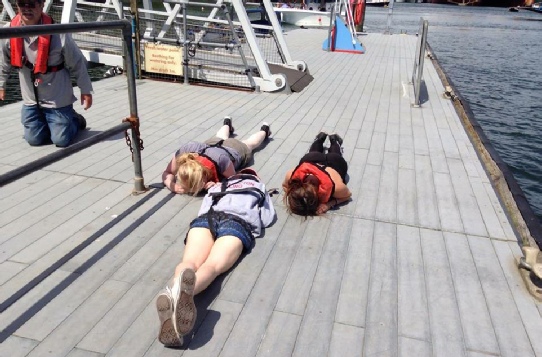[1] Hughes, S. H. (1999). The geochemical and mineralogical record of the impact
of historical mining within estuarine sediments from the upper reaches of the Fal
Estuary, Cornwall, UK. Fluvial Sedimentology VI, 28, pp. 161-
[2] Cornwall County Council. (2006). Environmental: Code of Practice for the ports of Falmouth, Truro & Penryn. Cornwall: Cornwall County Council.
[3] Somerfield, P. J. and Warwick, R. M. (1994). Soft sediment meiofaunal community
structure in relation to a long-
[4] Mullin, J.B., Riley, J.P. (1955). The colorimetric determination of silicate
with special reference to sea and natural waters. Analytica Chimica Acta. 12, pp.
162-
[5] Murphy, J., Riley, J.P. (1962). A modified single solution method for the determination
of phosphate in natural waters. Analytica Chimica Acta. 27, pp. 31-
[6] Johnson, K.S., Petty, R.L. (1983). Determination of nitrate and nitrite in seawater
by flow injection analysis. Limnology and Oceanography. 28(6), pp. 1260-
[7] Grasshoff, K., Kremling, K., Ehrhardt, M. (1999). Methods of seawater analysis.
Third Edition. Wiley-
[8] Widdicombe, C., Eloire, D., Harbour, D., Harris, R. and Somerfield, P. (2010).
Long-
[9] Muylaert, K., Sabbe, K. and Vyverman, W. (2009). Changes in phytoplankton diversity
and community composition along the salinity gradient of the Schelde estuary (Belgium/The
Netherlands). Estuarine, Coastal and Shelf Science. 82(2), pp. 335-
[10] Gameiro, C., Cartaxana, P., Cabrita, M. and Brotas, V. (2004). Variability in
Chlorophyll and Phytoplankton Composition in an Estuarine System. Hydrobiologia.
525(1-
[11] Lauria, M., Purdie, D. and Sharples, J. (1999). Contrasting phytoplankton distributions
controlled by tidal turbulence in an estuary. Journal of Marine Systems. 21(1-
[12] III, R. (1984). Distribution and Community Structure of Estuarine Copepods. Estuaries. 7(1), p. 38.
[13] Collins, N. and Williams, R. (1982). Zooplankton Communities in the Bristol
Channel and Severn Estuary. Marine Ecology Progress Series. 9, pp. 1-
[14] Lagadeuc, Y., Bouté, M. and Dodson, J. (1997). Effect of vertical mixing on
the vertical distribution of copepods in coastal waters. Journal of Plankton Research.
19(9), pp. 1183-
[15] Chinnery, F. and Williams, J. (2003). The influence of temperature and salinity
on Acartia (Copepoda: Calanoida) nauplii survival. Marine Biology. 1(1), pp. 1-
[16] Hilmer, T. and Bate, G. (1990). Covariance Analysis of Chlorophyll Distribution
in the Sundays River Estuary, Eastern Cape. Southern African Journal of Aquatic Sciences,
16(1-
[17] Azam, F., Fenchel, T., Field, J.G., Gray, J.S., Meyer-


Bonus Picture: Group 1 working hard and looking at fish through a gap at the pontoon!
The views expressed here are not representative of the University of Southampton.